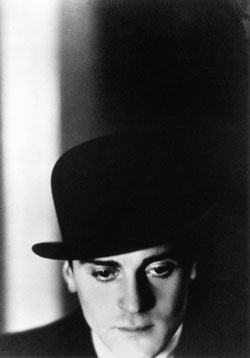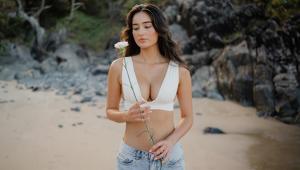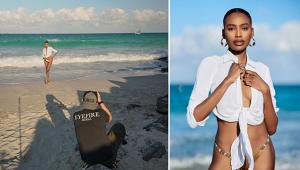A really nice piece of art indeed!
Lotte Jacobi's Historical Portraiture
All photos by Lotte Jacobi
Lotte Jacobi was renowned not only for her portraits of influential people, but equally, for her gift of revealing her subjects' inner being. She always insisted that her style was "the style of the person I'm photographing." Hence the title of her traveling exhibit: "Focus on the Soul: The Photographs of Lotte Jacobi." Originally this exhibit was on view at the Currier Museum of Art in New Hampshire and at the Jewish Museum in New York City, prior to arriving at its current venue at the National Museum of Women in the Arts, Washington, D.C. (June 18--September 5, 2004). This exhibition features Jacobi's intriguing portraiture, as well as some of her documentary, abstract and nature images.
 |
|
|
According to Kurt Sundstrom, Associate Curator of the Currier Museum, and the person who organized this exhibit, Johanna Alexandra "Lotte" Jacobi was a fourth-generation photographer in her family. "Her great-grandfather Samuel went to France in the early 1840s and bought a license to practice photography from Louis Daguerre (the French inventor of photography)," he explains. Jacobi's grandfather and father continued the business, and operated several photo studios throughout the years.
 |
|
|
Photography as an Art Form
Lotte Jacobi was born in Thorn, West Prussia, in 1896, and showed a great interest in the arts, even as a child. "She took pictures early on, and later pursued acting and dancing. But she realized that her talents lay elsewhere," says Sundstrom. Jacobi began photography with a pinhole camera at 11 years old, which was replaced by an Ernemann 9x12cm plate camera when she was 13. She later used a Leica, which gave her "greater mobility."
While attending a university in Munich in 1925--divorced and a single mother--Jacobi became interested in the current "modernist" artistic photographic techniques. Her influences were German photographers Helmar Lerski and Hugo Erfurth. She really admired Alfred Stieglitz's photography after seeing it in his magazine, Camera Work. In 1927, she took over the family studio in Berlin.
 |
 |
||
|
|
Incorporating her early love of the theater and dancing, Jacobi photographed many live dance and theatre performances in Berlin. She was allowed backstage, where she took pictures and sold many of them to magazines, such as the portrait of Lotte Lenya, photographed in 1928. Lenya was married to Kurt Weill, author of "Three Penny Opera." In 1929, she photographed Niura Norskaya for "Head of a dancer." As Sundstrom observes, "Jacobi was interested in shapes."
She photographed actor Peter Lorre in 1930 before he came to America, at a time when he "finally acquiesced to having his picture taken." This image, according to Sundstrom, represented a new movement where the photographer would shoot an extreme closeup of the subject, thus producing a very "humanized" image. Lorre, as with many of Jacobi's subjects, became a close friend of hers.
 |
|
|
- Log in or register to post comments

Im no expert, but I believe you just made an excellent point.
You certainly fully understand what youre speaking about, and I can truly get behind that.
cleaning services Chicago

It's really good written and I fully agree with You on main issue, btw. I must say that I really enjoyed reading all of Your posts. Kitchen remodeling San Diego

Hi there! I simply would like to give you a big thumbs up for the great information you've got right here on this post. I am returning to your site for more soon.
العاب بنات جديدة
العاب تلبيس البنات

Oh, this is a magical post. It’s life the most majestic post there is on this planet right now. This is really good work from your side. I strongly recommend you keep doing this kind of work.

Very good pictures and a topic that can never dissapear.

















































